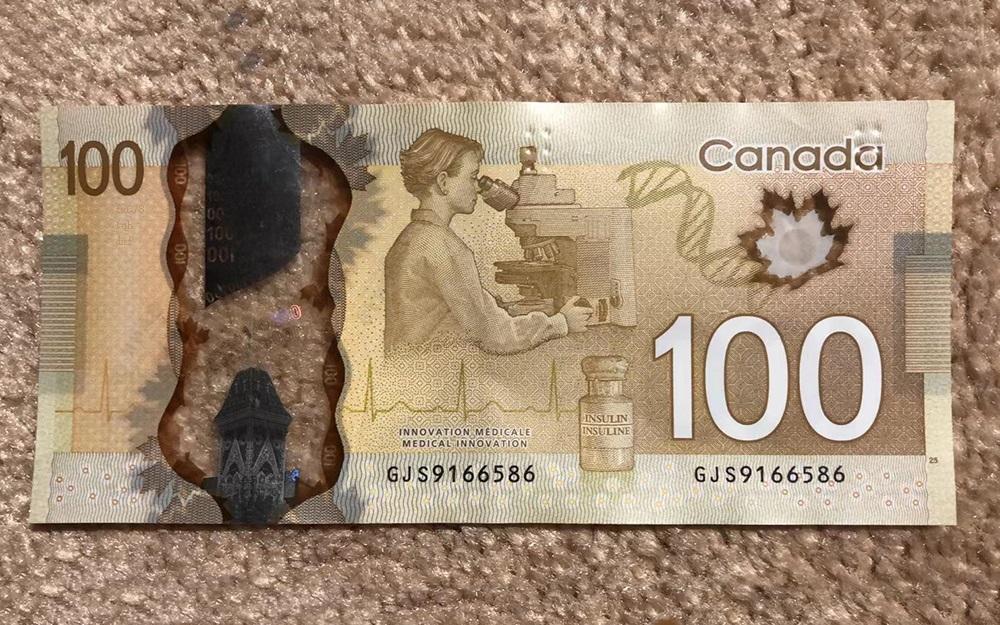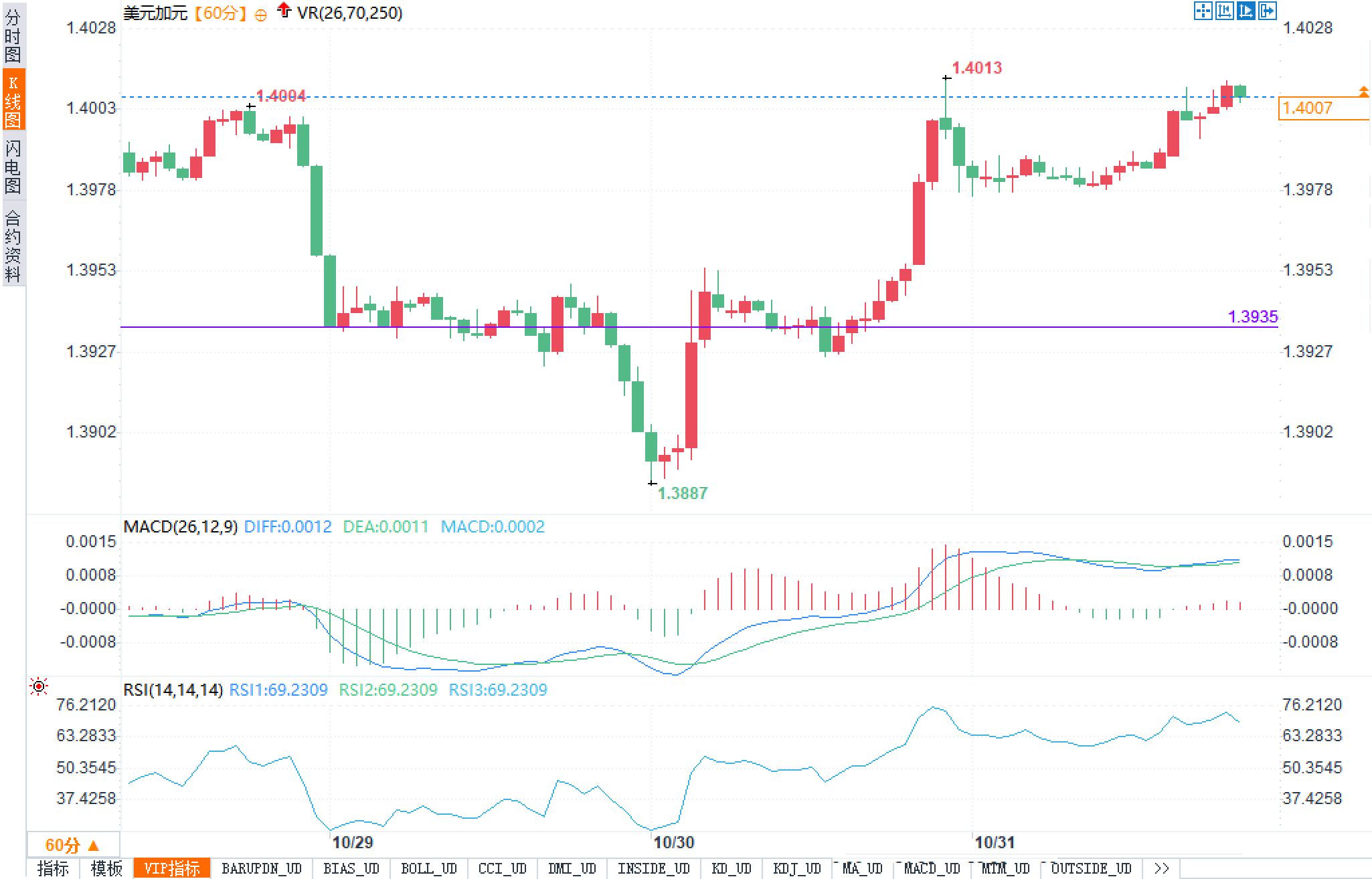"Conditional easing" ignites the market! The US dollar surges, and Canadian dollar bears are sharpening their knives?
2025-10-31 19:59:36

Overall, the strengthening of the US dollar and the weakening of the Canadian dollar occurred simultaneously: on the one hand, the hawkish tone of the Federal Reserve has once again boosted dollar yields; on the other hand, the Bank of Canada's easing measures, coupled with falling oil prices, have suppressed the performance of the Canadian dollar. The USD/CAD pair exhibited a range-bound market structure this week, but short-term momentum has clearly shifted towards a bullish market.
Fundamentals: Diverging Monetary Policies and Energy Market Correction Provide Upward Momentum for USD/CAD. The biggest macroeconomic variable this week came from the repricing of monetary policy expectations. The Federal Reserve announced on Wednesday that it was lowering the target range for the federal funds rate to 3.75%-4%, the lowest in nearly three years. The action itself was in line with market expectations, as the market had largely priced in this rate cut. However, what truly changed exchange rate pricing was not the rate cut itself, but the post-meeting statement. Chairman Powell directly emphasized that a further rate cut in December was "far from a certainty," adding that there were "significant differences of opinion" within the policy committee, and that "no decision has been made on December." This is tantamount to telling the market that easing is not automatic but depends on subsequent data. Along with this information, US Treasury yields rose, the US dollar strengthened, risk assets became safer, and USD/CAD rebounded rapidly from around 1.3890 and stabilized above 1.4000.
Interest rate expectations data confirm this repricing process. Based on derivatives pricing, the market's probability of the Federal Reserve cutting rates by another 25 basis points in December, lowering the policy range to 3.50%-3.75%, has decreased from 91.1% a week ago to 72.8%. The probability remains high, but it no longer carries the weight of a "certainty." This shift from "certain easing" to "conditional easing" has increased the relative attractiveness of the US dollar, especially against the backdrop of a renewed rise in the short end of the yield curve, giving the dollar renewed support from carry trades.
In contrast, the Bank of Canada also announced a 25 basis point rate cut on Wednesday, lowering the key interest rate to 2.25%. The core logic behind the official statement was that previous rounds of easing had already released a considerable amount of stimulus, but vigilance was still needed regarding growth risks and price pressures. Governor Macklem stated that this rate-cutting cycle "may be nearing its end," but emphasized that the central bank would "maintain its ability to respond" should the domestic economic outlook undergo "substantial changes." In other words, the Bank of Canada attempted to convey to the market that "we are not engaging in unlimited quantitative easing," but the reality is that Canada's risk-free yield range remains a full notch lower than that of the United States. This interest rate differential naturally weakens the Canadian dollar's support in the foreign exchange market.
The second layer of pressure comes from crude oil. The Canadian dollar has a high positive correlation with crude oil prices due to the significant weight of energy exports in Canada's export structure. Over the past two days, West Texas Intermediate (WTI) crude oil has fallen from its high of around $62.50 last week, currently hovering just above $60.00 per barrel, a weekly decline of nearly 2%. This energy price correction has renewed market concerns about the elasticity of Canada's nominal export revenue and trade surplus, further weakening buying interest in the Canadian dollar. In contrast, the US dollar has attracted inflows due to safe-haven demand. These two factors combined have driven a short-term upward trend in the USD/CAD exchange rate.
In summary, the fundamentals are driven by a typical dual approach of "interest rate differentials + commodities": the Federal Reserve did not give an unconditionally dovish signal, and US yields supported the US dollar; the Bank of Canada's policy rate remained low, and falling oil prices dragged down the Canadian dollar. This strong-weak structure is the key background for the USD/CAD pair to remain above 1.4000.
Technical Analysis: The hourly chart shows that USD/CAD remains in a strong bullish structure. Observing the hourly chart (60-minute candlestick chart), after forming a low in the 1.3890-1.3887 area, USD/CAD experienced a V-shaped reversal and rapid rise, reaching a high of 1.4013. During this period, the candlesticks showed a series of bullish candles with full bodies and short lower shadows, indicating that the bullish market encountered almost no significant selling pressure during the upward movement. After this surge, although the exchange rate retreated slightly from the high, it remained stable above the psychological level of 1.4000. The latest price is 1.4007, indicating that this round number has gradually transformed from a resistance level to a support level, exhibiting the characteristics of "resistance turning into support".

As shown in the chart, a key horizontal line is located around 1.3935. Previously, after the Fed's decision, the exchange rate broke through this level and underwent a brief pullback test before quickly stabilizing and resuming its upward momentum. This "breakout-pullback-re-upward" price action aligns with a typical trend-following upward pattern and is a common and effective breakout formation in a bull market. If the price continues to hold above 1.3935, then 1.3935 is likely to solidify as a static support level over a longer timeframe.
In terms of momentum indicators, the MACD indicator showed a clear bullish resonance after the decision. The MACD line (fast line) has crossed above the signal line (slow line), causing the MACD histogram to turn positive and expand, indicating that short-term momentum is continuing to be released, which is a typical confirmation signal of upward momentum. Even when the price consolidated above 1.4000, the MACD did not quickly fall back below the zero axis, but remained in the positive range, indicating that the pullback was a high-level consolidation rather than a trend reversal, and the trend line still leans towards an upward channel.
The Relative Strength Index (RSI, 14) data shows that the indicator once rose to around 76, entering the conventionally defined "overbought" zone. A high RSI usually indicates that a short-term surge has been too rapid, suggesting a technical pullback or consolidation is needed, rather than an immediate continuation of the upward trend. Given that the price is currently consolidating rather than continuing its surge, this consolidation can be seen as a process of "digesting overbought conditions" at a high level. As long as the RSI can gradually decline from its extreme highs, and the price does not effectively break below 1.3935 or even 1.4000, this "time-for-space" consolidation is generally bullish for the medium-term trend. Conversely, if the RSI continues to diverge, i.e., the RSI weakens while the price continues to surge, then a potential short-term bull trap should be anticipated.
Considering price, MACD, and RSI indicators, the hourly trend for USD/CAD remains upward. The first key support level is around 1.3935, the psychological level of 1.4000 is the current defensive position for the bulls, and the weekly high of 1.4013 constitutes immediate resistance. If 1.4013 is successfully broken and held, the area above it will enter a relatively vacuum zone lacking historically high trading volume, potentially leading to increased volatility. Conversely, if 1.4000 is breached, the bullish structure at higher levels will show its first technical flaw.
- Risk Warning and Disclaimer
- The market involves risk, and trading may not be suitable for all investors. This article is for reference only and does not constitute personal investment advice, nor does it take into account certain users’ specific investment objectives, financial situation, or other needs. Any investment decisions made based on this information are at your own risk.





















